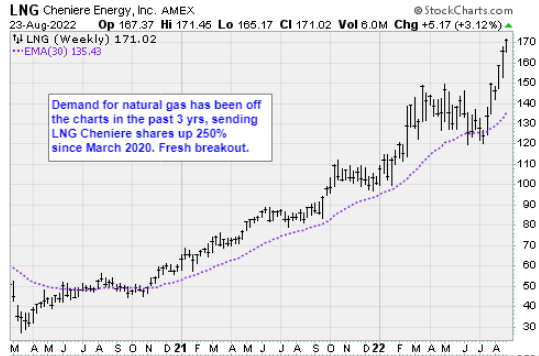Stocks ran into trouble midday and never really recovered, notes Jon Markman, editor of Strategic Advantage.
In our latest data junkie update, an AI analyst reports that the benchmark indexes tend to swoon over the next five weeks of a midterm election year.
Strategic Insight
Bears remained in control Tuesday as the S&P 500 (SPX) declined for a third straight session. The benchmark index finished at 4,128, a loss of 0.2%.
Don’t be fooled by the small loss. Bulls made several attempts to take back the overhead resistance level for the S&P 500 at 4,175. They all failed.
Traders are worried about inflation once again. Bloomberg reported Tuesday that the Saudis may work with their OPEC partners to cut production. Oil prices promptly rallied 3.7%, and those higher prices could force the Federal Reserve to keep raising interest rates.
Well, at least that is the worry.
This feeds into the bearish narrative that stock prices are stubbornly too high given the macroeconomic headwinds. My guess is that most traders will remain on the sidelines ahead of a Friday morning speech from Fed Chairman Powell at his annual Jackson Hole retreat.
Unfortunately, that could mean two more lethargic sessions. The bulls clearly need to take back the 4,175 level. There is an important support for the benchmark at 3,975, the 50-day moving average.
Strategic Trade
There hasn’t been an easy trade since the breakout rally for the S&P 500 from 4,175 to 4,325. Consequently, we have been on the sidelines. It should be clear by late Thursday if the next big move is down to 3,975 or back up to 4,325. Be patient.
The Backstory
The Dow Jones Industrial Average (DJI) fell 0.5% to 32,909.59 and the Nasdaq (IXIC) was flat at 12,381.30. Energy led the gainers while the real estate sector was the steepest decliner.

Breadth favored advancers four-three, and there were 67 new highs vs 214 new lows. The leaders were Equinor (EQNR), Occidental Petroleum (OXY), Cheniere Energy (LNG), EQT (EQT), and Chesapeake Energy (CHK). Energy is back, baby.
The US two-year yield declined 3.9 basis points to 3.30%, and the ten-year yield rose 2.6 basis points to 3%, which is considered sumptuously high.
New-home sales slowed to a 511,000 annual rate in July from a revised 585,000 rate in June, compared with 575,000 expected in a survey compiled by Bloomberg. Home sales were down almost 30% from July 2021.
July's drop continues the steep downtrend in sales since the start of the year, sending new home sales to below pre-pandemic levels, according to a research note from Pantheon Macroeconomics.
The August flash reading of manufacturing conditions fell to 51.3 from 52.2 in July, S&P Global said, compared with 51.8 in a survey compiled by Bloomberg.
West Texas Intermediate futures jumped 3.6% to $93.63 a barrel. Saudi Arabia's Oil Minister Prince Abdulaziz bin Salman told Bloomberg News OPEC+ could cut production when the cartel next meets to raise prices.
In other economic news, Redbook reported that US same-store retail sales rose 13.5% year-over-year in the week ended August 20, faster than a 12.7% gain in the prior week as back-to-school sales picked up.
In company news, Zoom Video Communications (ZM) cut its sales and earnings guidance for the year after reporting mixed results for the fiscal second quarter as the broader macroeconomic environment and a strong dollar hurt its outlook. Shares plunged more than 16%.
Palo Alto Networks (PANW) reported another stellar quarter in which the cybersecurity company beat Street's fiscal fourth-quarter estimates and gave "healthy" full-year guidance, Wedbush said in a research note Tuesday. Shares surged 12%, the top performer on the Nasdaq 100.
The biggest decliner on the S&P 500 was Twitter (TWTR), with shares slumping 7.4%. The social media giant poses a risk to US national security and allegedly misled regulators about its defenses against hackers and spam accounts, according to media reports, citing former Twitter security head turned whistleblower Peiter Zatko.
Data junkie update: One of my AI correspondents reports his proprietary analytics program shows that the S&P 500 has a strong tendency to decline by around 3% from the third week of October through the fourth week of September during mid-term election years when the Democrats occupy the White House. Some instances include 1998, when the benchmark index fell 3.4% over that span; 1962, when the index fell 6.6%; and 1946 when the index fell 14%.
Strategic Portfolio
Our spambot/email woes appear to be nearing a conclusion; cross your fingers. With any luck, we can return to on-time newsletter delivery in the next week or so.
Repeat: In the meantime, be sure to enter your cell phone number on your Account Settings page so you receive a text message containing a link to our latest letter when it publishes on our website. This approach bypasses the troublesome email system.
Daily results: Our Digital Transformation list declined .89% on Tuesday.…We added Netflix shares back into our list at $208.17 on July 20. It’s up 8.8% to $226.54. Set new stop at $215.20.
Our other letters: In our Tactical Options letter yesterday we sold the first half of our Etsy (ETSY) Sept $100 puts for a gain of 25.6%. These were just bought Friday.….In our Counterpoint Options newsletter, we sold our August fifth and August eighth positions in S&P Biotech SPDR (XBI) August $85 calls for an overall gain of 60% today, which was awesome.




















